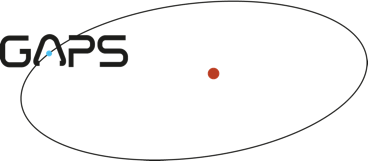The status of the programs on the exoplanets at TNG will be reviewed, with a particular emphasis on the current difficult situation.
In questo contributo sono riportate le statistiche delle notti di osservazione dall'inizio del long program GAPS2.0. In particolare, vengono mostrate le statistiche relative al run AOT40 (appena finito) e quelle relative al run AOT41 (appena cominciato).
Breve discussione di analisi dei programmi GAPS1 ancora pendenti.
Updates/results from GAPS1-HADES
Sommario delle osservazioni, del campione stellare e delle attivita' del programma Young Objects, inclusa la definizione delle criticita' rilevate.
I will present the results for V830 Tau after the third observing season with HARPS-N came to an end. The talk will be structured following the emerging structure of the draft in preparation, highlighting the concept and the main points to be addressed in the publication.
I'll give a brief summary of the status of the analysis of the Young Object target YO14
YO36 è una stella giovane attorno nella curva di luce K2 della quale sono stati osservati i transiti di quattro oggetti diversi. La stella è molto attiva e le misure di Velocità Radiale ottenute fin'ora non sembrano mostrare segnali kepleriani.
Here we present a validation study for the TESS object of interest TOI-942. We performed a follow-up of this object with HARPS-N, collecting about 30 spectra. The HARPS-N spectra allow us to characterise the star and confirm the presence of the planet.
A general introduction about the current state of the VIS/NIR observations and analysis, and the future prospects
Reflected light from 51 Peg b
Atmospheric RML effect of KELT-20b
H-alpha absorption on WASP-33b
By performing high-resolution transmission spectroscopy with GIANO-B over the whole near-infrared, we measured the signature of seven molecular species via cross correlation with model spectra.
Here we report preliminary results of the atmospheric studies we performed on the three warm giant planets, Wasp-69b, Wasp-107b and Wasp-80b. By using the PCA technique, and the cross-correlation method, we succeeded in detecting 7 molecules in these exo-atmospheres. Given the low temperature of the investigated exoplanets, some of these molecules are un-expected by equilibrium theories, we...
Near-infrared high-resolution spectroscopy relies on cross correlation with model spectra to extract information about the chemical and physical conditions of exoplanet atmospheres. In this talk I will review recent efforts to identify the most reliable molecular line lists applicable to simulate the high temperatures of extrasolar planets. Furthermore, I will explain how GIANO could be used...
In the talk we will discuss the effects of X-ray and ultraviolet radiation on atmospheric erosion around young stars. Specifically, we focus on the bimodal distribution of exoplanet radii (i.e. “The Fulton Gap”; Fulton et al. 2017). In Modirrousta-Galian et al. (2020,b) this distribution is theoretically analysed in order to make several predictions that can be astronomically tested. For...
The knowledge of planetary mass and radius of young planets is crucial in the understanding if their atmospheres can survive at the intense XUV stellar irradiation
I will provide an update on the old GAPS1 M dwarfs followed as special objects
The detailed characterisation of stars is important in many astrophysical fields. In particular, knowing with great precision the atmospheric parameters and chemical composition of planet hosting stars allows to fully characterise exoplanets and address a number of aspects, e.g. the planet-metallicity relation.
In our work, we performed a precise determination of the atmospheric parameters...
Methods to derive in a consistent way stellar abundances of low-mass stars from optical spectra are still missing. In this contribution we present a first attempt to fill this gap. Our methodology is based on the use of principal componen analysis and sparse Bayesian’s fitting methods. A set of M dwarfs in binary systems orbiting around an FGK primary was observed and is used to training our...
In questo contributo è presentato lo stato dello studio dell'attività delle stelle ospite di pianeti transitanti. Sono trattati sistemi osservati duranti GAPS1.0 e confrontati con altri sistemi transitanti e stelle di campo.
I will provide an update on M112

